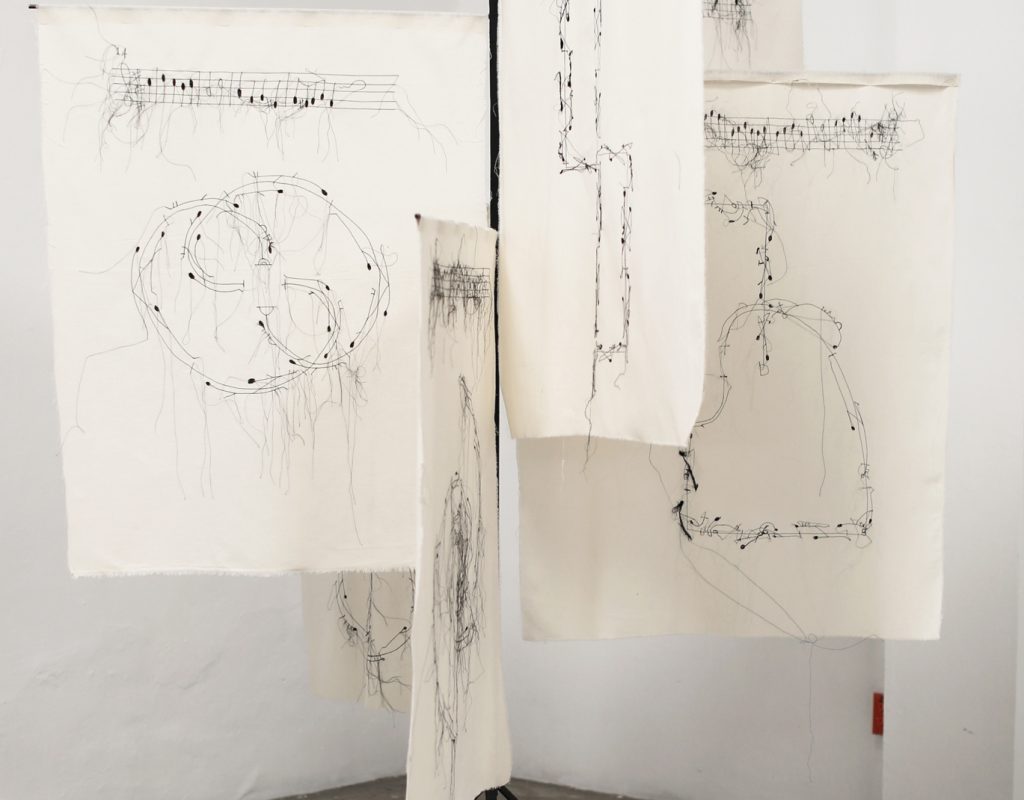
Positions. Notaciones de Beauchamp-Feuille
Technical Data Sheet
Credits
DETALLES DEL PROYECTO
Series of stitched drawings, based on the book Choregraphie ou L’art de de decrire la dance, par caracteres, figures et signes demonstratifs by Raoul-Auger Feuillet, published in 1701, which details an ancient system of dance notation invented by the author at the court of Louis XIV. While earlier dance manuals, such as Thoinot Arbeau’s Orchesographie (1588), separated the notation of dance from the notation of dance. Arbeau, separated musical notation, textual description, and gestural illustration, the Choregraphie offered a complete system for notation of the body in movement. The manual begins with five “true positions” for the placement of the feet, postures which correspond in the feet, postures that correspond largely to classical ballet, and five “false positions”. From here we move on to the steps, “the different figures that the leg makes when moving”. The author acknowledges that they are “almost innumerable”, but nevertheless they can be named: straight, flat, open, circular or round, wavy and beaten. On the page, they are inscribed with symbols that resemble musical notation twisting to its own rhythm: a wavy step forward resembles an eighth note with a wavy body; an open step inward evokes a bass clef arching its back. From the steps we move to the marks: sinking, rising, jumping, prancing, falling, sliding, holding the foot up, pointing the toes, placing the heel and turning several degrees. Like all forms of writing, choreography (literally the writing of choral movement) carries with it the ideologies of its origins. In the case of Beauchamp-Feuillet notation, it was designed for courtly bodies and its grammar was shaped by the postures of royal taste. This new series of stitched drawings extends research on the languages of choreographic notation and its scripts.
The work offers a unique visual and kinetic experience. The series of machine-stitched canvases, each decorated with Beuchamp-Feuille’s intricate notations, are presented hanging in a circular shape on metal structures, similar to a tree from whose branches the notations hang. . These structures allow the viewer to circle them, thus emulating the movements of the dance with their own steps. This arrangement invites a dynamic interaction with the work, where the movement of the body around the pieces reveals subtle connections between dance and machine sewing. In this way, the meticulous sewing with its rhythm and rhythm is intertwined with the fluidity and grace of dance movements, offering a reflection on the interaction between visual art and integral human movement.
This presentation attempts to capture both the visual and conceptual essence of the work, organically relating the technical elements of sewing with the expressiveness of body movement inspired by dance.
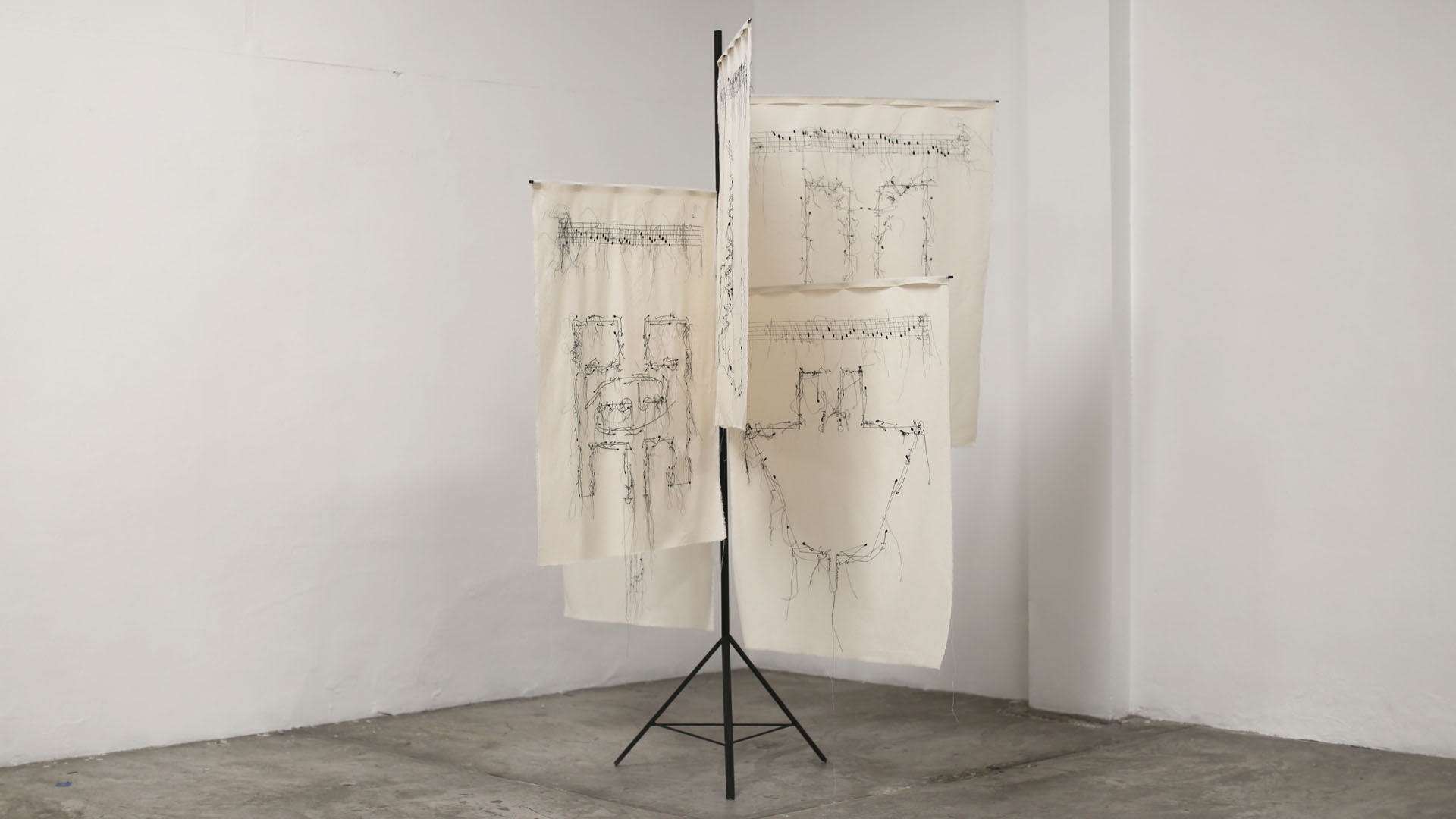
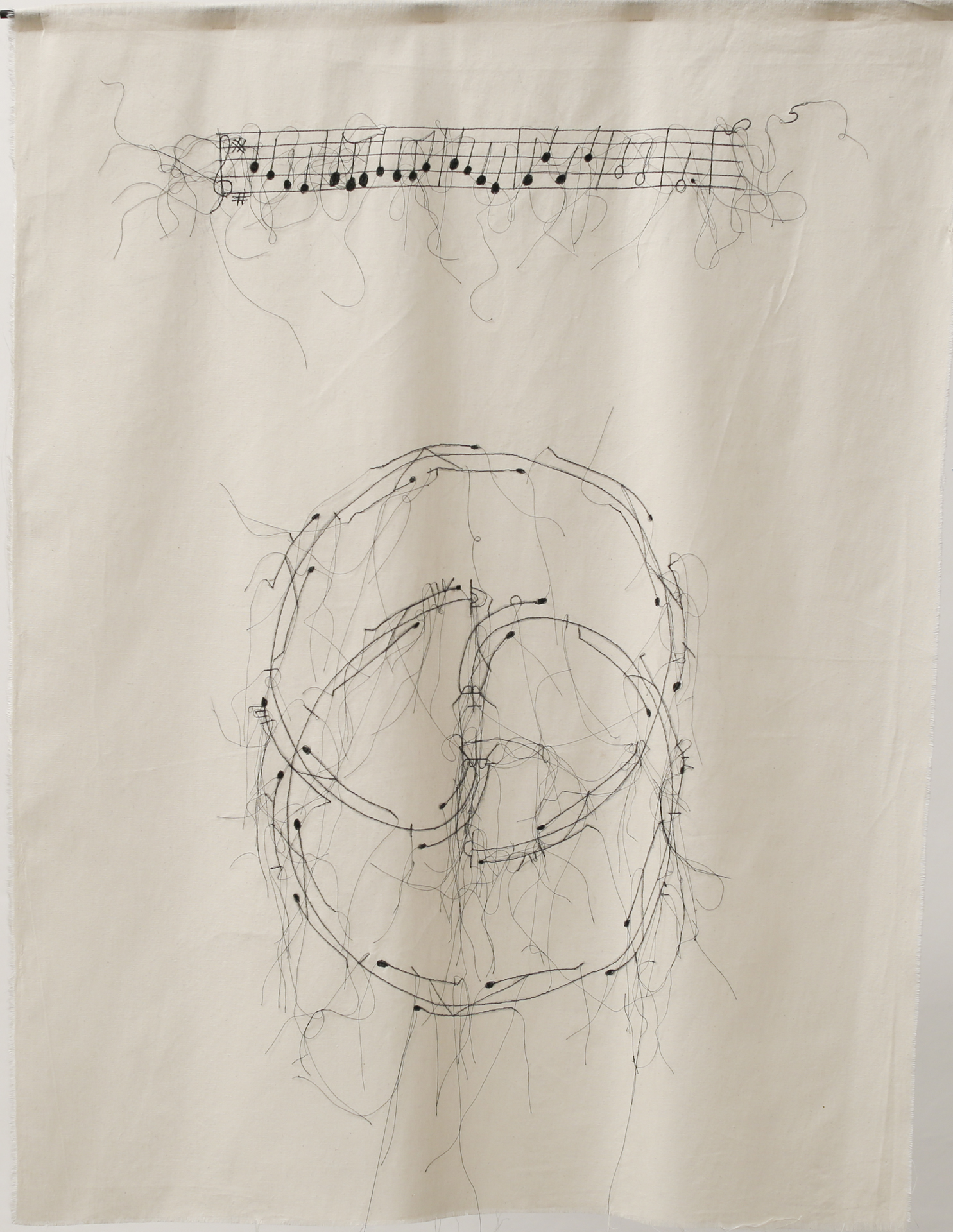
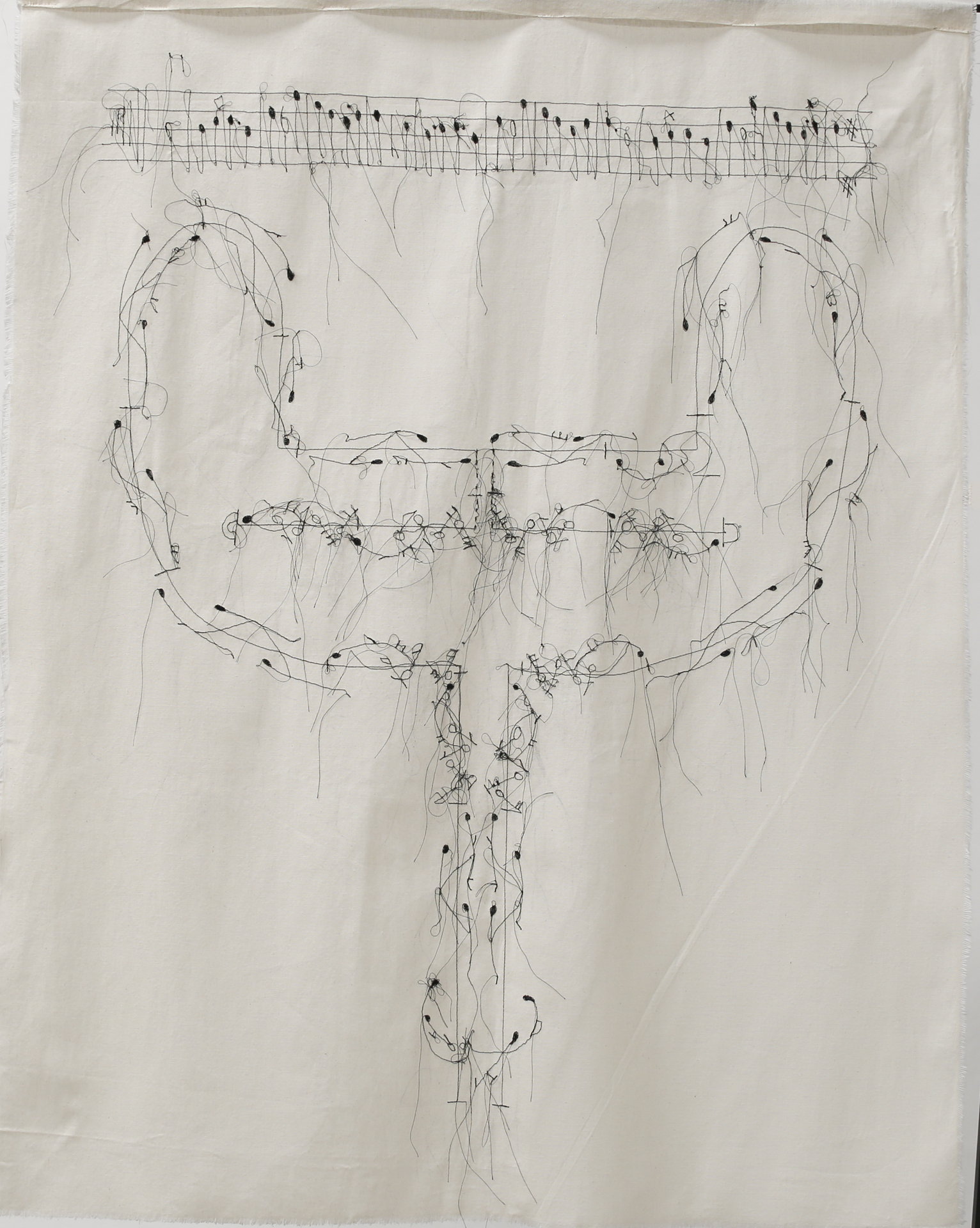
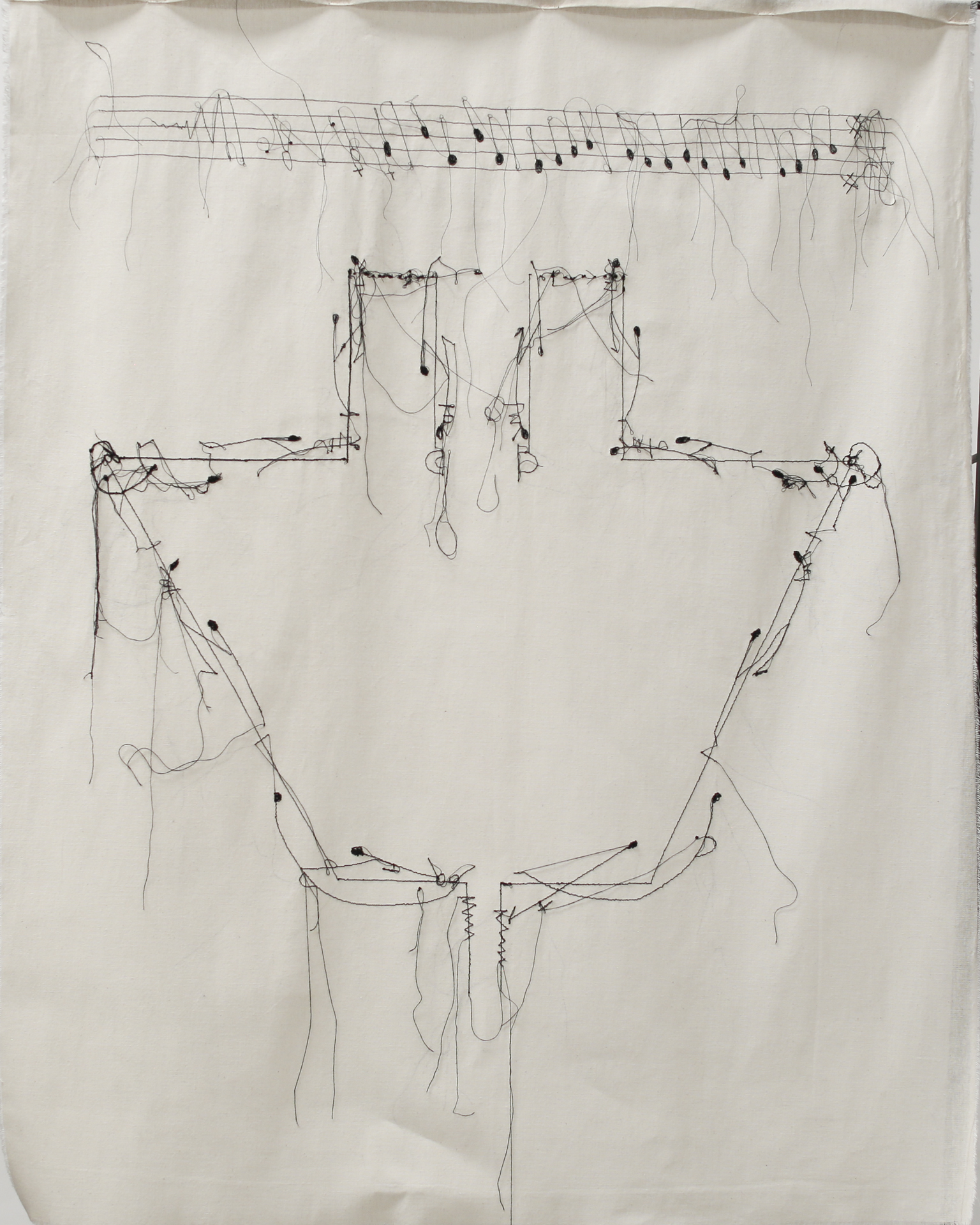
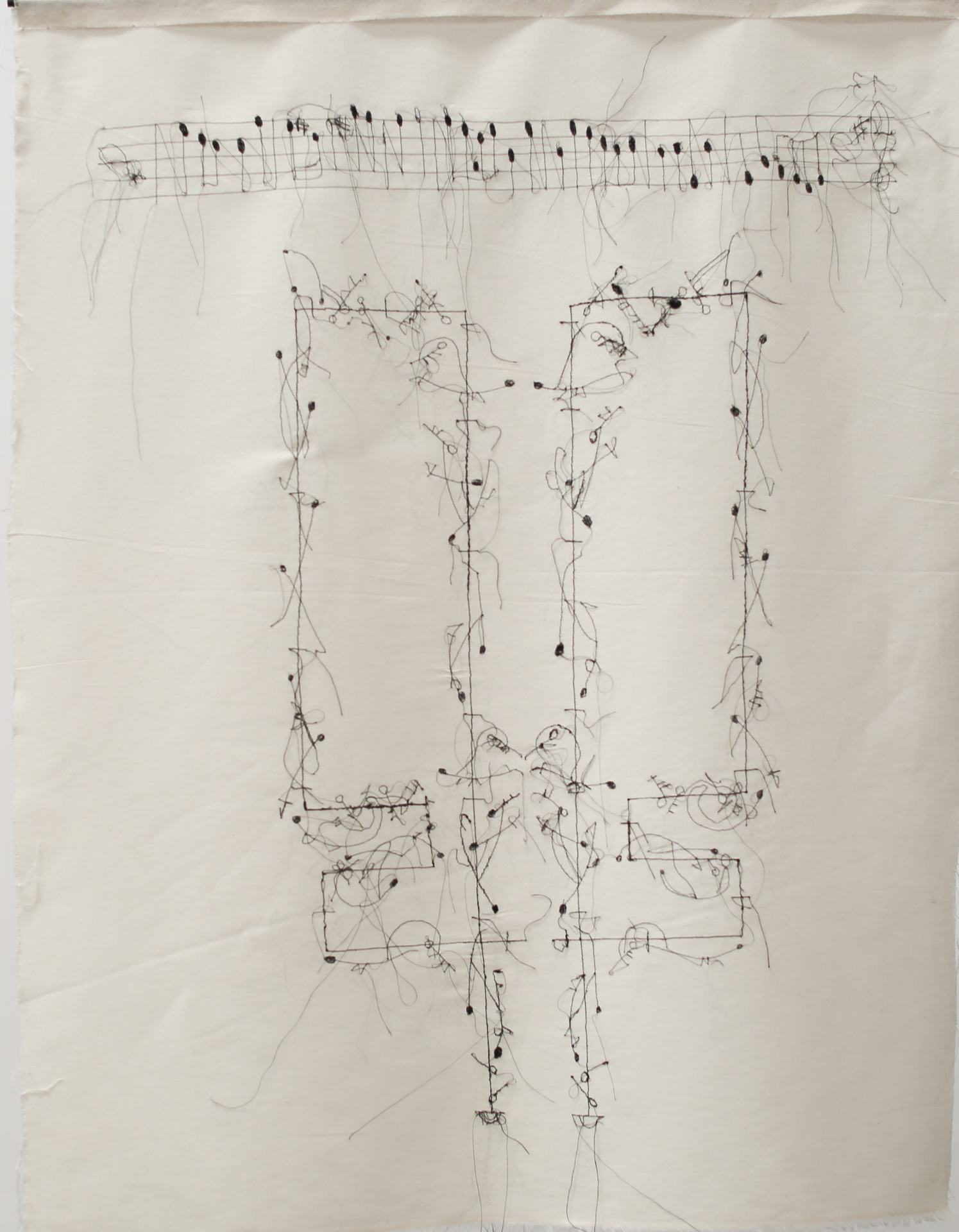
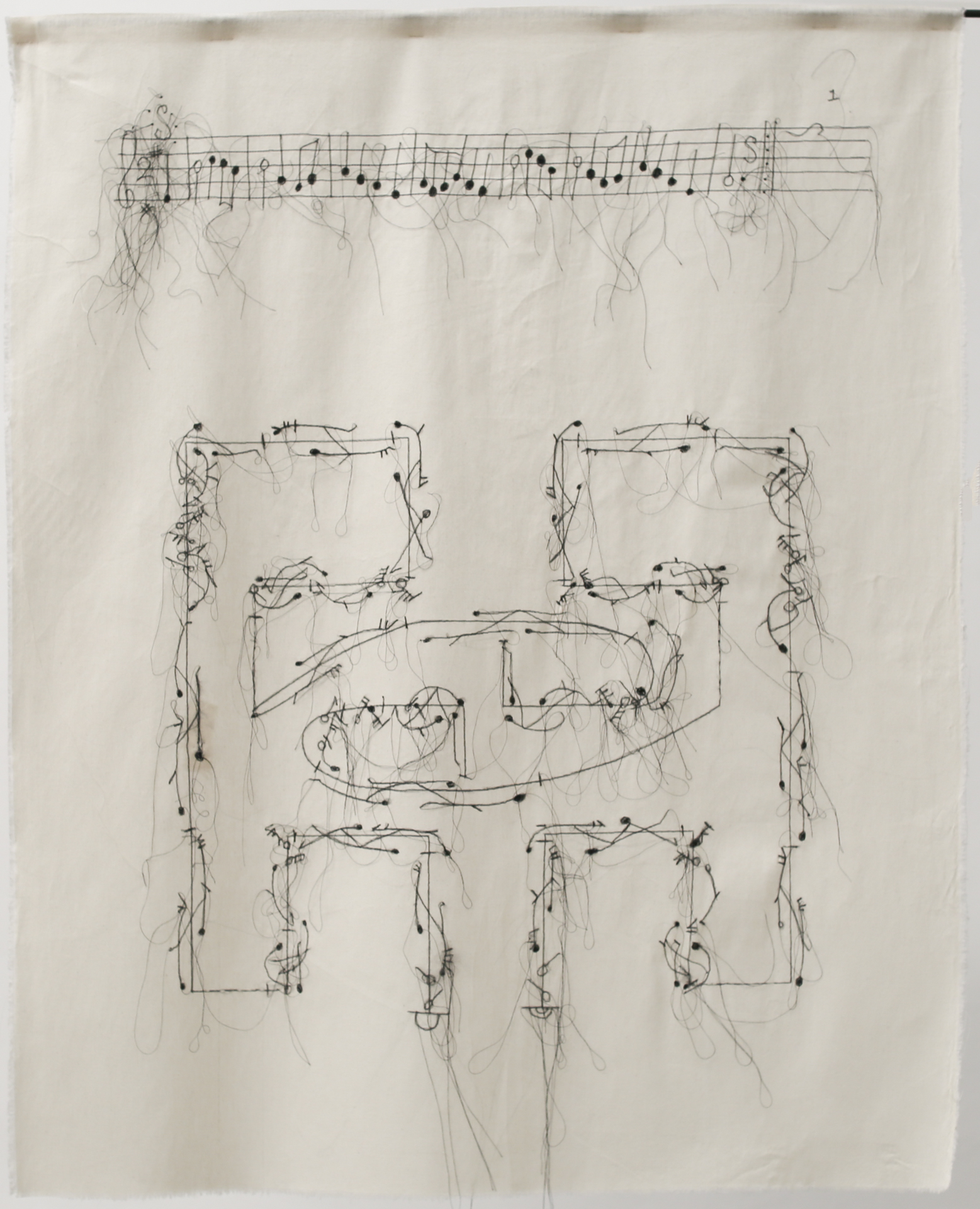
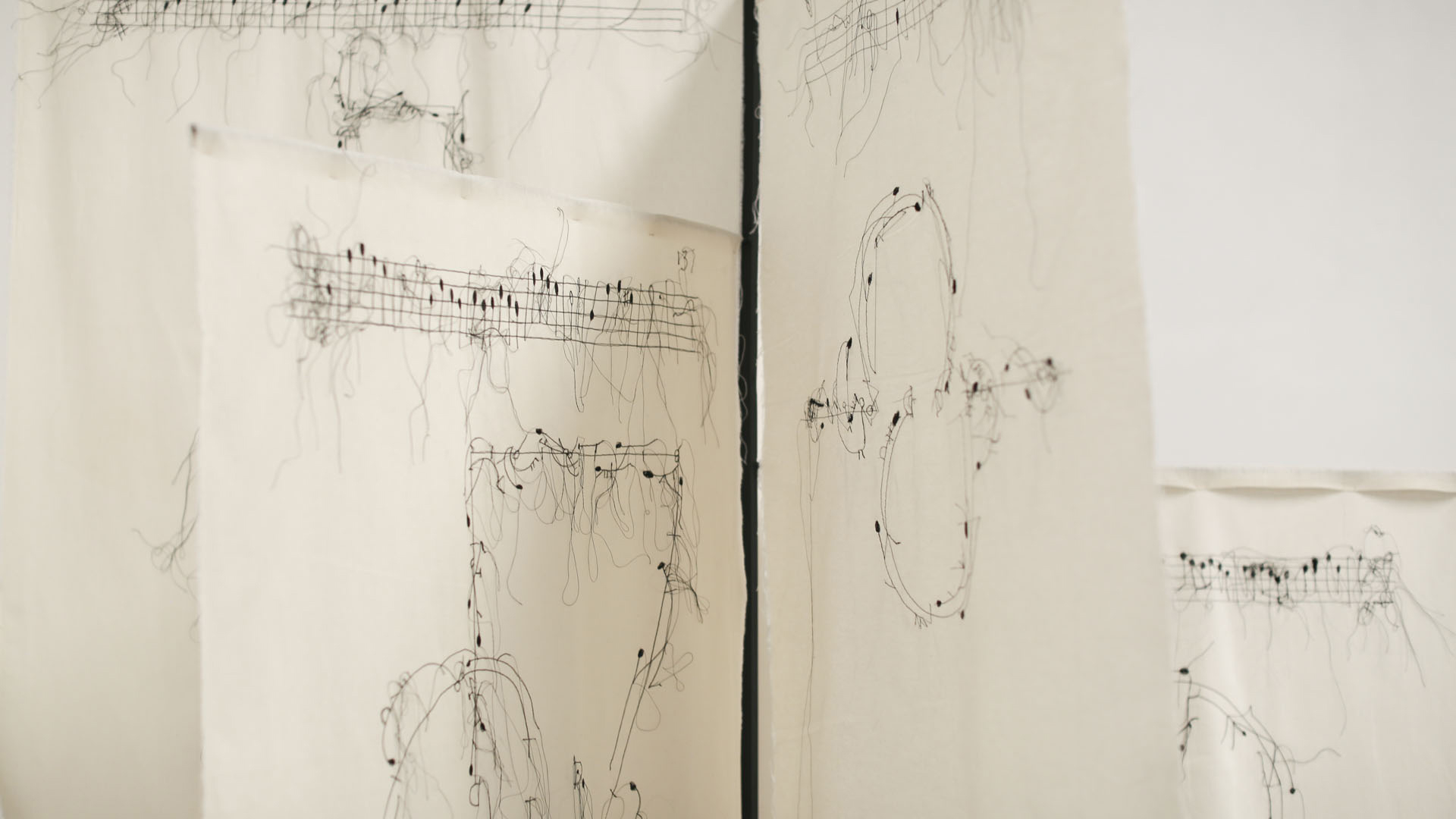
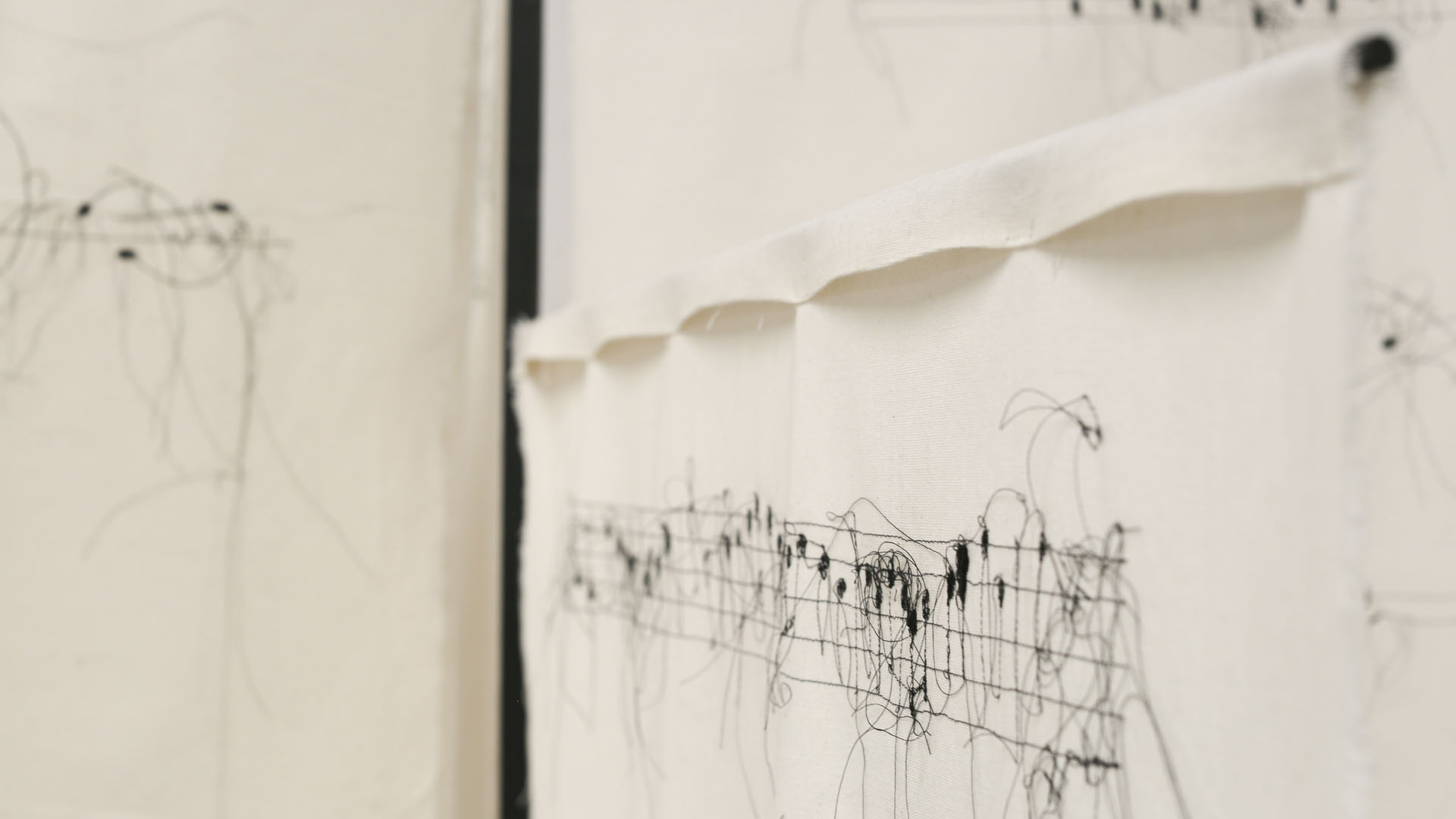
DETALLES DEL PROYECTO
DETALLES DEL PROYECTO
DETALLES DEL PROYECTO
DETALLES DEL PROYECTO
DETALLES DEL PROYECTO
DETALLES DEL PROYECTO